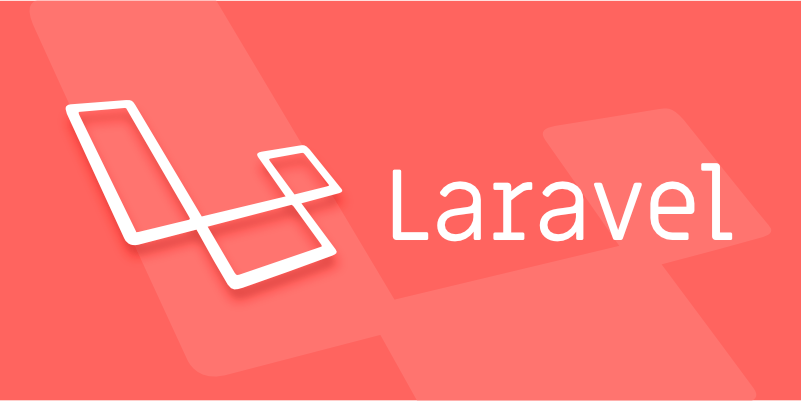Customizing Primary Keys and Timestamps in Laravel Eloquent.
Jul 19, 2025 am 02:16 AMTo customize primary keys and timestamps in Laravel Eloquent, first set the $primaryKey property to change the primary key name, then set $incrementing = false for non-auto-incrementing keys, and define $keyType for non-integer types, followed by disabling timestamps with $timestamps = false if they are absent, or redefining their names using CREATED_AT and UPDATED_AT constants if they differ, and finally ensure database schema matches auto-increment settings when using non-standard column names.

When working with Laravel Eloquent, you might find that the default behaviors for primary keys and timestamps don’t always fit your needs. Whether you're dealing with legacy databases or specific design requirements, customizing these fields is a common task.

Changing the Primary Key
By default, Eloquent assumes your model’s primary key is an auto-incrementing integer named id. But what if your table uses something else, like a UUID or a different column name?
To change the primary key:

- Set the
$primaryKeyproperty in your model to the name of your actual primary key column. - If it's not an incrementing integer, also set
public $incrementing = false; - For non-integer keys, make sure to define the key type using
$keyType(e.g.,'string')
For example:
protected $primaryKey = 'user_uuid'; public $incrementing = false; protected $keyType = 'string';
This is especially useful when integrating with existing databases where primary keys vary from table to table.

Disabling or Customizing Timestamps
Eloquent automatically manages created_at and updated_at columns by default. But sometimes those columns are named differently — or worse, they’re not present at all.
If your table doesn't have timestamp columns, you’ll need to disable them in your model:
public $timestamps = false;
On the other hand, if they exist but use different names, just override the defaults:
const CREATED_AT = 'post_created'; const UPDATED_AT = 'post_updated';
These constants can go at the top of your model class. This approach helps when working with older databases or APIs where field naming isn’t consistent with Laravel’s conventions.
Handling Non-standard Auto-incrementing Columns
Sometimes, even if you're using auto-incrementing IDs, they might be named differently — like userId instead of id. In such cases, just setting $primaryKey won’t be enough because Eloquent still expects the sequence behind the scenes.
You’ll still want to set $incrementing = true unless explicitly told otherwise. Also, ensure the database column is configured as the auto-increment field (like in MySQL or PostgreSQL). Laravel doesn’t manage this part — that’s up to your migrations or schema setup.
One gotcha: if you're manually inserting records and relying on Laravel to return the new ID, make sure your database actually returns that value after insert — otherwise things like $model->id right after saving may not work as expected.
That’s about it. These small tweaks let you work more smoothly with Eloquent, whether you're adapting to old systems or designing new ones with custom conventions.
The above is the detailed content of Customizing Primary Keys and Timestamps in Laravel Eloquent.. For more information, please follow other related articles on the PHP Chinese website!

Hot AI Tools

Undress AI Tool
Undress images for free

Undresser.AI Undress
AI-powered app for creating realistic nude photos

AI Clothes Remover
Online AI tool for removing clothes from photos.

Clothoff.io
AI clothes remover

Video Face Swap
Swap faces in any video effortlessly with our completely free AI face swap tool!

Hot Article

Hot Tools

Notepad++7.3.1
Easy-to-use and free code editor

SublimeText3 Chinese version
Chinese version, very easy to use

Zend Studio 13.0.1
Powerful PHP integrated development environment

Dreamweaver CS6
Visual web development tools

SublimeText3 Mac version
God-level code editing software (SublimeText3)

Hot Topics
 How to use PHP to develop a Q&A community platform Detailed explanation of PHP interactive community monetization model
Jul 23, 2025 pm 07:21 PM
How to use PHP to develop a Q&A community platform Detailed explanation of PHP interactive community monetization model
Jul 23, 2025 pm 07:21 PM
1. The first choice for the Laravel MySQL Vue/React combination in the PHP development question and answer community is the first choice for Laravel MySQL Vue/React combination, due to its maturity in the ecosystem and high development efficiency; 2. High performance requires dependence on cache (Redis), database optimization, CDN and asynchronous queues; 3. Security must be done with input filtering, CSRF protection, HTTPS, password encryption and permission control; 4. Money optional advertising, member subscription, rewards, commissions, knowledge payment and other models, the core is to match community tone and user needs.
 Guide to matching Laravel routing parameter passing and controller method
Jul 23, 2025 pm 07:24 PM
Guide to matching Laravel routing parameter passing and controller method
Jul 23, 2025 pm 07:24 PM
This article aims to resolve common errors in the Laravel framework where routing parameter passing matches controller methods. We will explain in detail why writing parameters directly to the controller method name in the routing definition will result in an error of "the method does not exist", and provide the correct routing definition syntax to ensure that the controller can correctly receive and process routing parameters. In addition, the article will explore best practices for using HTTPDELETE methods in deletion operations.
 Data_get practice for dynamic access to model association properties in Laravel Livewire
Jul 23, 2025 pm 06:51 PM
Data_get practice for dynamic access to model association properties in Laravel Livewire
Jul 23, 2025 pm 06:51 PM
This article aims to solve how to efficiently and securely access deep properties associated with model through string paths when dynamically rendering data in LaravelLivewire components. When you need to obtain specific fields of the associated model based on a configuration string (such as "user.name"), access using object properties will fail. The article will introduce Laravel's data_get helper function in detail and provide code examples to show how to use it to solve this problem gracefully and ensure the flexibility and robustness of data acquisition.
 How to develop AI intelligent form system with PHP PHP intelligent form design and analysis
Jul 25, 2025 pm 05:54 PM
How to develop AI intelligent form system with PHP PHP intelligent form design and analysis
Jul 25, 2025 pm 05:54 PM
When choosing a suitable PHP framework, you need to consider comprehensively according to project needs: Laravel is suitable for rapid development and provides EloquentORM and Blade template engines, which are convenient for database operation and dynamic form rendering; Symfony is more flexible and suitable for complex systems; CodeIgniter is lightweight and suitable for simple applications with high performance requirements. 2. To ensure the accuracy of AI models, we need to start with high-quality data training, reasonable selection of evaluation indicators (such as accuracy, recall, F1 value), regular performance evaluation and model tuning, and ensure code quality through unit testing and integration testing, while continuously monitoring the input data to prevent data drift. 3. Many measures are required to protect user privacy: encrypt and store sensitive data (such as AES
 How to set environment variables in PHP environment Description of adding PHP running environment variables
Jul 25, 2025 pm 08:33 PM
How to set environment variables in PHP environment Description of adding PHP running environment variables
Jul 25, 2025 pm 08:33 PM
There are three main ways to set environment variables in PHP: 1. Global configuration through php.ini; 2. Passed through a web server (such as SetEnv of Apache or fastcgi_param of Nginx); 3. Use putenv() function in PHP scripts. Among them, php.ini is suitable for global and infrequently changing configurations, web server configuration is suitable for scenarios that need to be isolated, and putenv() is suitable for temporary variables. Persistence policies include configuration files (such as php.ini or web server configuration), .env files are loaded with dotenv library, and dynamic injection of variables in CI/CD processes. Security management sensitive information should be avoided hard-coded, and it is recommended to use.en
 How to make PHP container support automatic construction? Continuously integrated CI configuration method of PHP environment
Jul 25, 2025 pm 08:54 PM
How to make PHP container support automatic construction? Continuously integrated CI configuration method of PHP environment
Jul 25, 2025 pm 08:54 PM
To enable PHP containers to support automatic construction, the core lies in configuring the continuous integration (CI) process. 1. Use Dockerfile to define the PHP environment, including basic image, extension installation, dependency management and permission settings; 2. Configure CI/CD tools such as GitLabCI, and define the build, test and deployment stages through the .gitlab-ci.yml file to achieve automatic construction, testing and deployment; 3. Integrate test frameworks such as PHPUnit to ensure that tests are automatically run after code changes; 4. Use automated deployment strategies such as Kubernetes to define deployment configuration through the deployment.yaml file; 5. Optimize Dockerfile and adopt multi-stage construction
 Deep analysis of matching Laravel routing parameter transfer and controller method
Jul 23, 2025 pm 07:15 PM
Deep analysis of matching Laravel routing parameter transfer and controller method
Jul 23, 2025 pm 07:15 PM
This article deeply explores the correct transmission of routing parameters and the matching mechanism of controller methods in the Laravel framework. In response to the common "method does not exist" error caused by writing routing parameters directly to the controller method name, the article elaborates on the correct way to define routing, that is, declare parameters in the URI and receive them as independent parameters in the controller method. At the same time, the article also provides code examples and suggestions on best practices for HTTP methods, aiming to help developers build more robust and RESTful Laravel applications.
 Laravel routing parameter passing: correctly define the controller method and routing binding
Jul 23, 2025 pm 07:06 PM
Laravel routing parameter passing: correctly define the controller method and routing binding
Jul 23, 2025 pm 07:06 PM
This article discusses the correct posture of parameter transfer of controller method in Laravel routing in depth. In response to common errors caused by writing routing parameters directly to the controller method name, the correct routing definition syntax is explained in detail, and the mechanism of Laravel automatic parameter binding is emphasized. At the same time, the article recommends using HTTPDELETE method that is more in line with RESTful specifications to handle deletion operations to improve the maintainability and semantics of the application.






